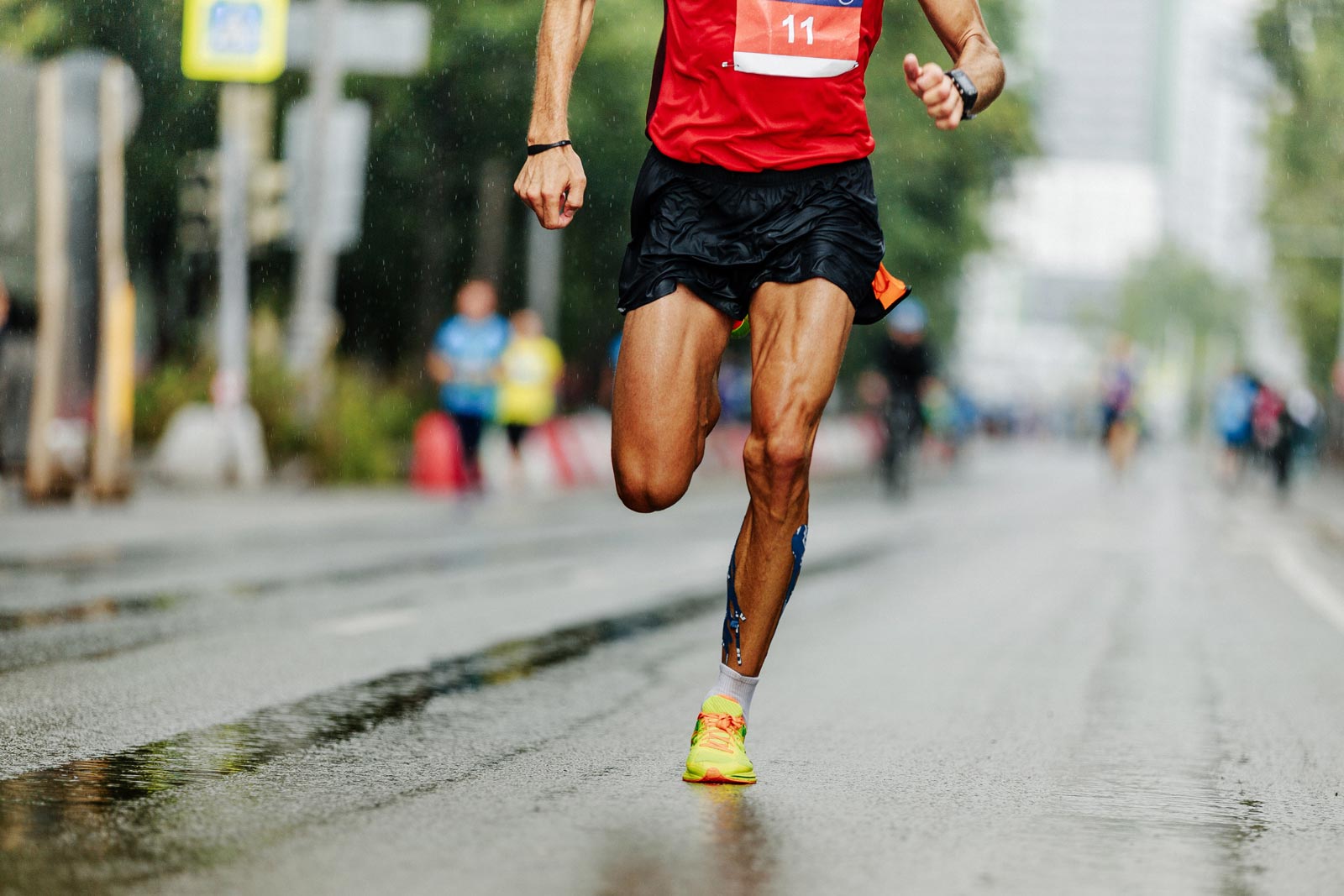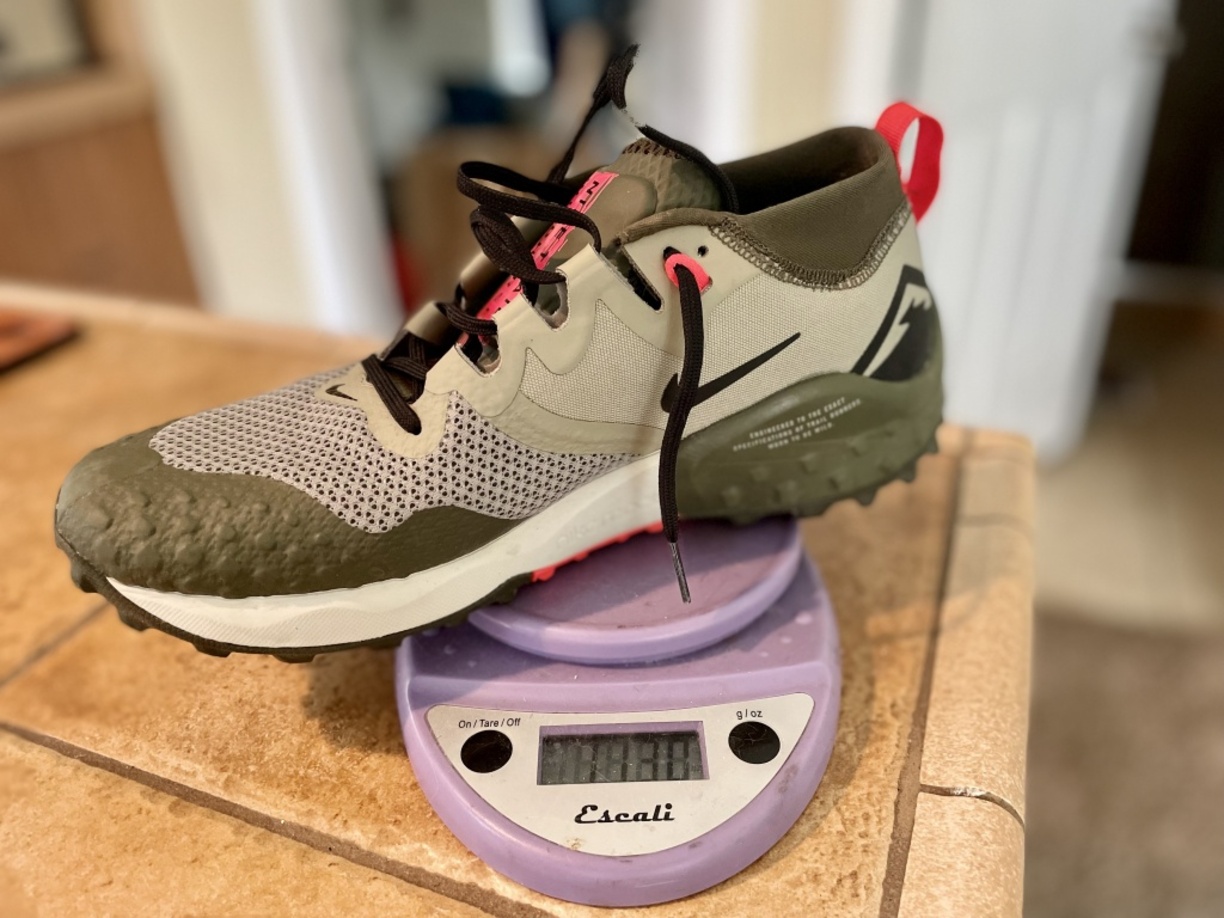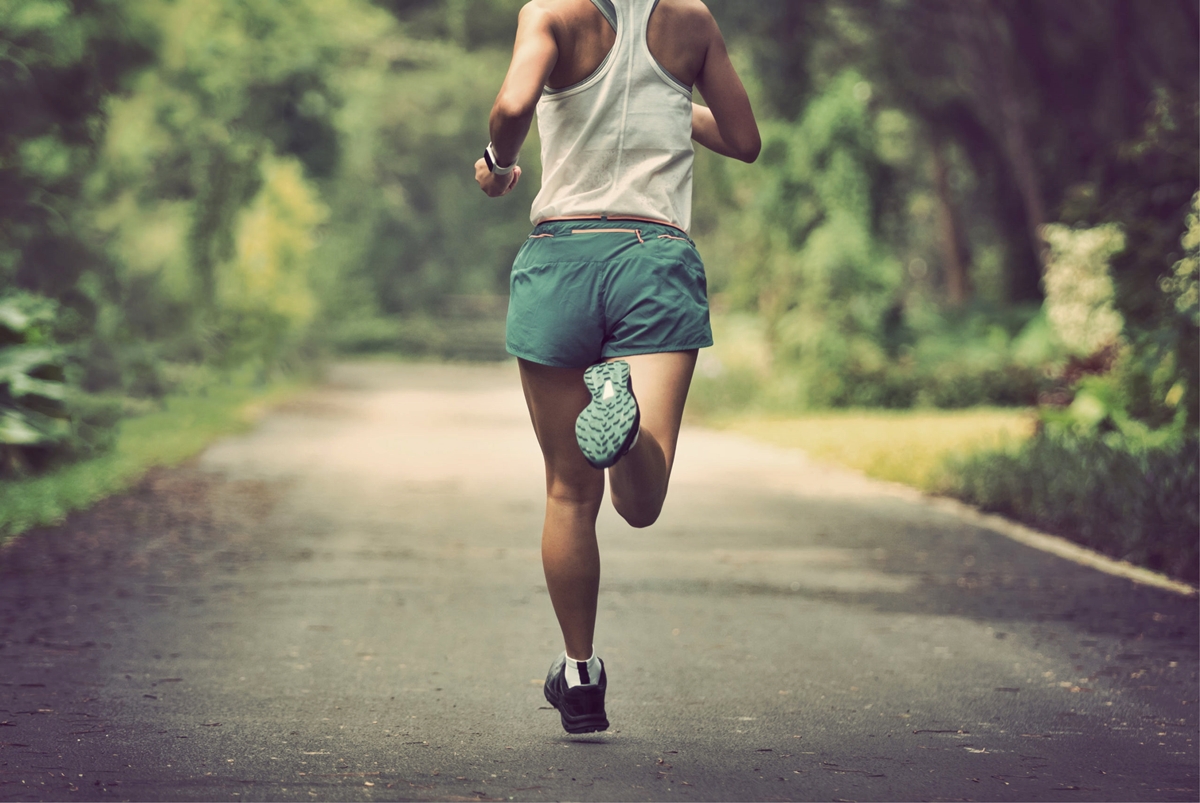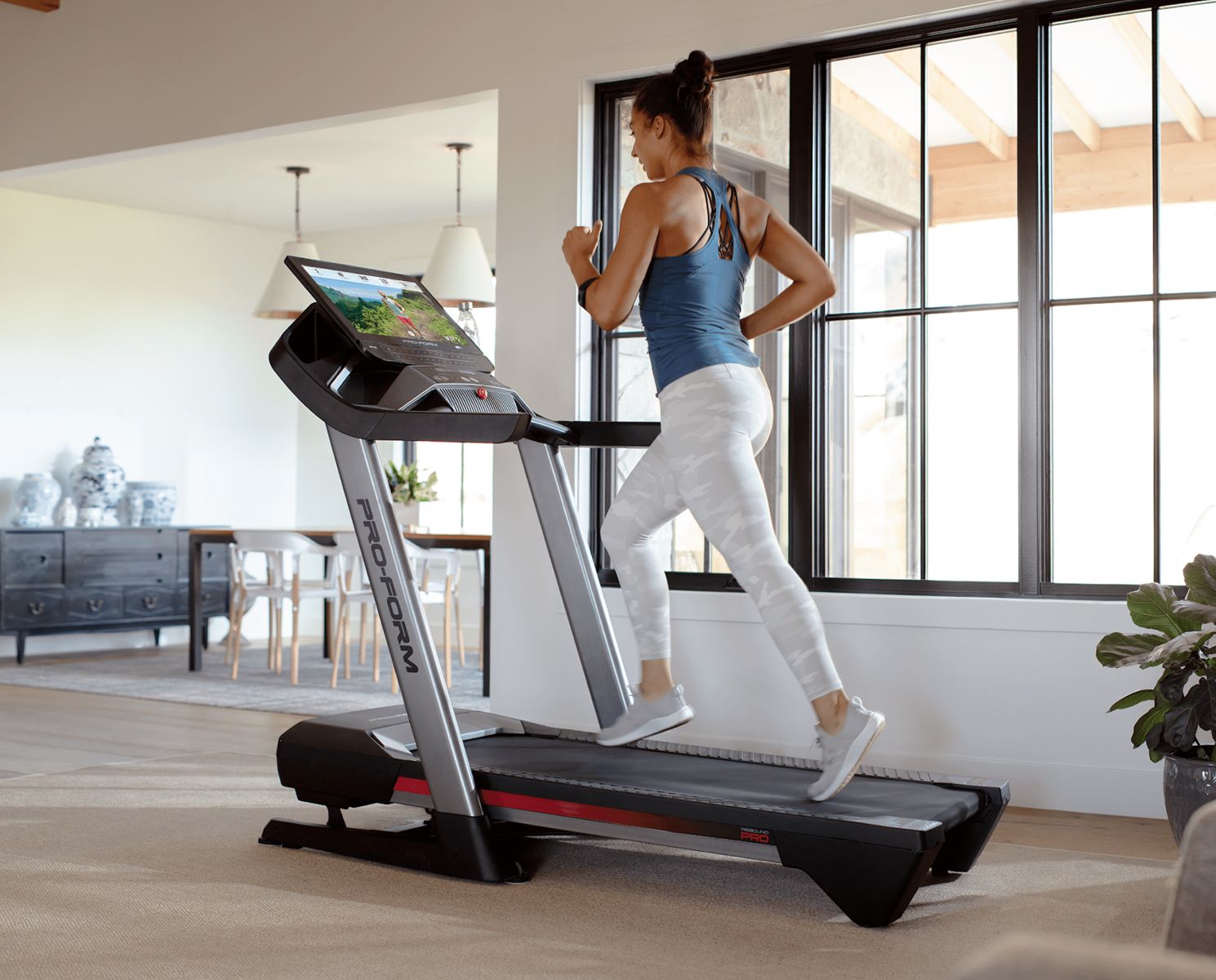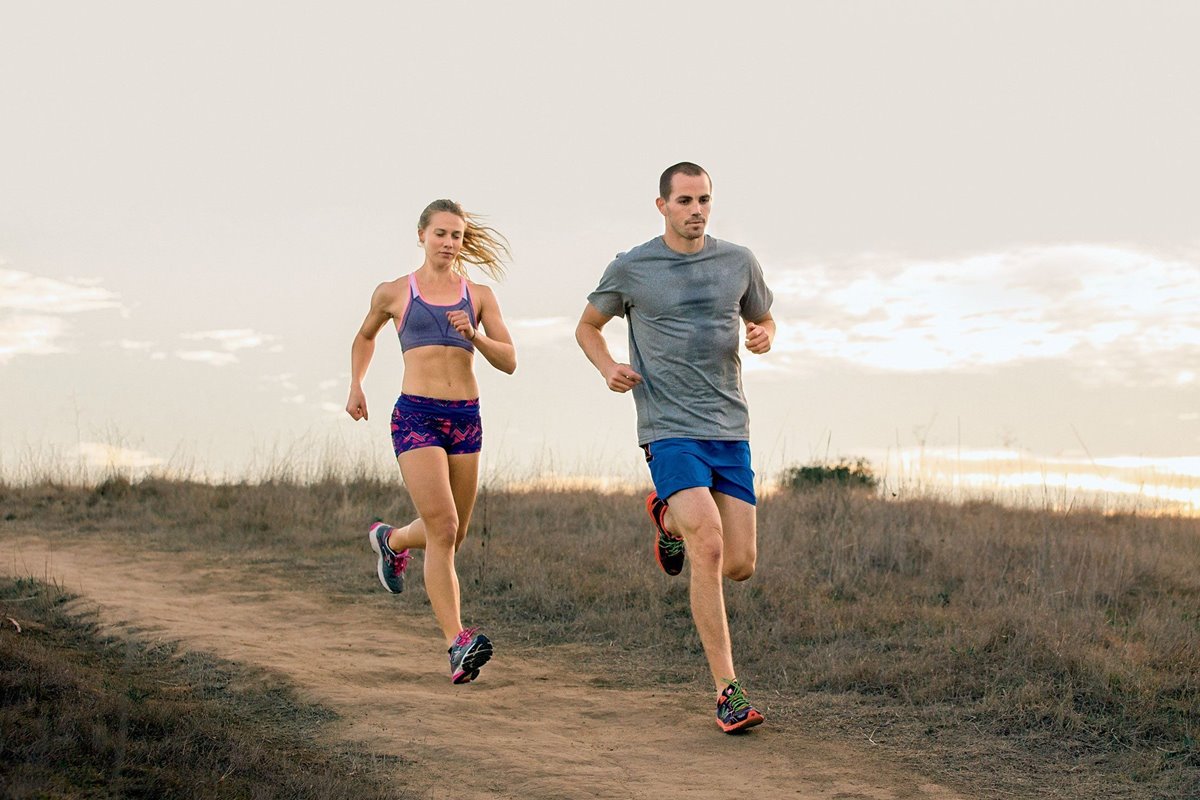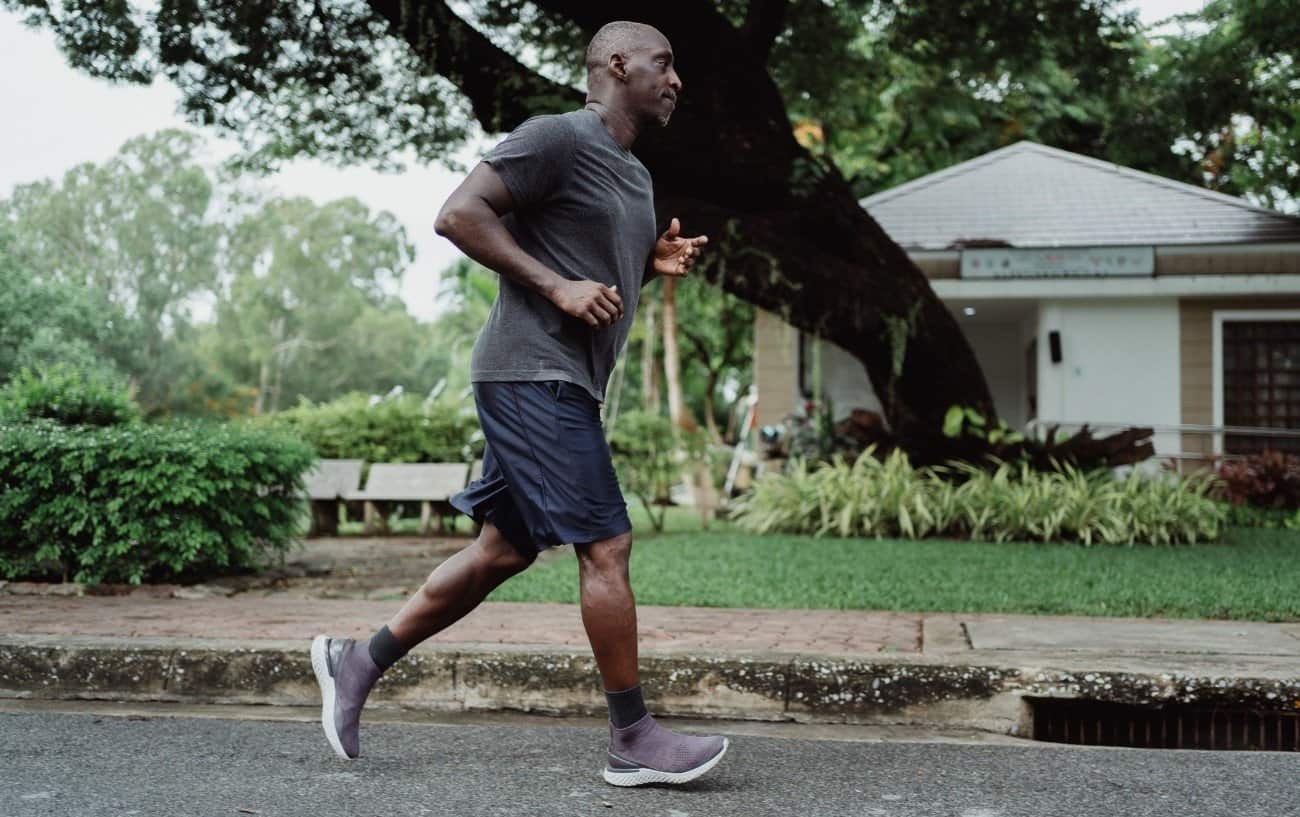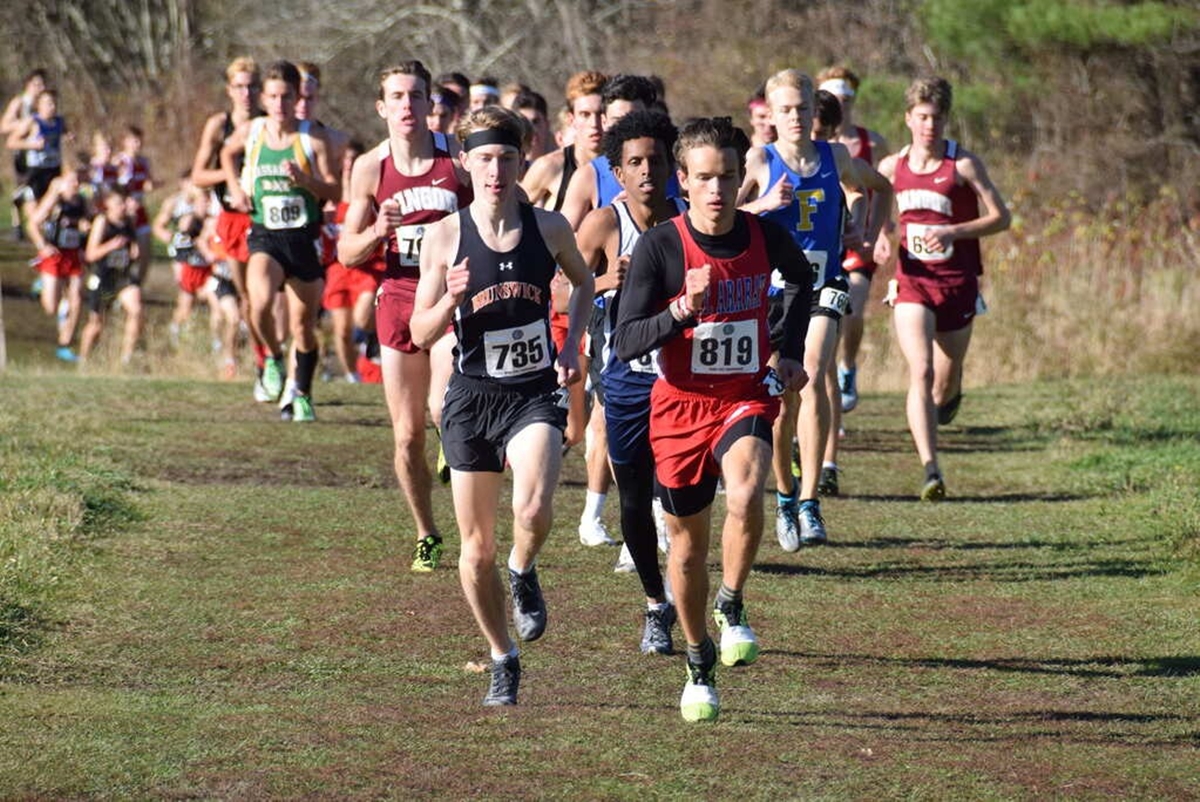

Featured
How Much Slower Is Trail Running
Modified: January 22, 2024
Find out how much slower trail running can be compared to road running. Read our featured article to discover the differences and benefits of hitting the trails.
Introduction
Welcome to the exhilarating world of trail running! If you’re a passionate runner looking to break away from the monotony of road running, trail running offers an exciting alternative that combines the joys of running with the beauty of nature. As a trail runner, you get to explore scenic trails, conquer challenging terrains, and experience a sense of adventure like no other.
But one question that often arises for both seasoned runners and newcomers to trail running is, “How does trail running compare to road running in terms of speed?” It’s a valid question considering the distinct differences in terrain, obstacles, and shoe choices between these two running disciplines.
In this article, we’ll delve into the factors that impact running speed in trail running. We’ll explore how the various trail surfaces, elevation changes, and obstacles affect your pace. Additionally, we’ll discuss the impact of different shoe choices on your running speed. We’ll then highlight the benefits of trail running and provide you with some tips to help improve your trail running speed.
By the end of this article, you’ll have a better understanding of why trail running may be slower than road running and how you can optimize your performance on the trails.
What is Trail Running?
Trail running is a form of running that takes place on natural, unpaved surfaces such as dirt paths, rocky trails, and forest trails. Unlike road running, which typically occurs on smooth, paved surfaces like sidewalks or asphalt, trail running offers a more rugged and diverse running experience.
Trail running routes can vary greatly in terms of distance, difficulty level, and elevation gain. Some trails wind through lush forests, while others traverse steep mountain terrains or meander along scenic coastal paths. Trail runners often seek out these natural environments to escape the hustle and bustle of city life and reconnect with nature.
What sets trail running apart from road running is the inherent sense of adventure and challenge. Trail runners must navigate uneven surfaces, contend with changes in elevation, and adapt to unpredictable trail conditions. While road running is generally a linear and predictable experience, trail running presents a dynamic and engaging platform for runners to push their limits.
Trail running can be a solitary pursuit or a social activity, depending on individual preferences. Some runners prefer the solitude and meditative aspect of running alone, while others enjoy the camaraderie of group trail runs and organized races. Either way, trail running provides an opportunity to immerse oneself in nature, breathe in fresh air, and experience the thrill of exploring new trails.
Trail running is a versatile sport that caters to runners of all levels, from beginners looking to escape the treadmill to elite athletes seeking a tougher challenge. Whether you’re a seasoned marathon runner or a fitness enthusiast looking to spice up your workout routine, trail running offers a unique and invigorating way to stay fit and healthy.
In the next sections, we’ll explore the factors that can impact your running speed in trail running, helping you understand why it may differ from road running. Let’s dive into the exciting world of trail running and uncover the secrets to maximizing your performance on the trails.
Factors Affecting Running Speed
When it comes to trail running, several factors come into play that can influence your running speed. Understanding these factors will help you prepare and adjust your expectations accordingly. Here are some key factors to consider:
Terrain and Elevation Changes
The terrain of the trail plays a significant role in your running speed. Trails can encompass a range of surfaces, including dirt, gravel, rocks, roots, and mud. These uneven and sometimes unstable surfaces require more effort to navigate, resulting in a slower running pace compared to the relatively smooth and consistent surface of roads. Uphill and downhill sections also impact your speed, with uphill climbs demanding extra energy and slowing you down, while downhill sections may allow for faster speeds but require caution and control to avoid injury.
Obstacles and Trail Conditions
Unlike roads, trails often present various obstacles like fallen branches, tree roots, rocks, and water crossings. Negotiating these obstacles requires agility and can slow down your pace as you carefully maneuver around them. Trail conditions can also affect your speed, especially during rainy or snowy weather when the trails become slippery and more challenging to navigate.
Running with Trail Running Shoes vs. Road Running Shoes
The type of footwear you choose can impact your performance on the trails. Trail running shoes are specifically designed to provide better traction, stability, and protection on uneven terrains. They typically have deeper lugs on the outsole to improve grip and prevent slippage. While road running shoes are designed for paved surfaces, they may not offer the same level of support and traction needed for optimal performance on trails. Wearing the appropriate trail running shoes can boost your confidence, agility, and speed.
Other factors that can affect your running speed in trail running include weather conditions, such as heat or strong winds, which can make running more challenging. Additionally, the length and technical difficulty of the trail can impact your speed, with longer and more technical trails usually requiring a slower pace to maintain stability and safety.
It’s important to note that the purpose of trail running is not necessarily focused on achieving faster times like in road racing. Trail running offers a different kind of challenge and reward, emphasizing the connection with nature and the thrill of exploration. Therefore, it’s crucial to set realistic expectations and appreciate that speed may take a backseat to the overall experience and enjoyment of trail running.
Now that we’ve explored the various factors that can affect your running speed in trail running, let’s delve into how trail running impacts your speed and pace.
Terrain and Elevation Changes
One of the most distinctive features of trail running is the varied and often challenging terrain. Unlike the predictable and smooth surfaces of roads, trails can present a wide array of obstacles and surfaces, making it an exhilarating yet demanding experience.
The terrain of a trail can range from dirt paths to rocky trails, from grassy meadows to sandy dunes. Each type of terrain requires a different approach, as the footing and stability vary significantly. Running on a dirt trail allows for a firm yet forgiving surface, while rocky trails can be uneven and require careful foot placement to avoid tripping or twisting an ankle.
Elevation changes are another factor that greatly impacts running speed in trail running. Trails can feature steep ascents, challenging descents, and rolling hills. Climbing uphill demands extra effort and slows down your pace due to the increased energy required to overcome gravity. Conversely, running downhill can allow for a faster speed, but it also requires control and proper technique to prevent falls or muscle strain.
The combination of varied terrain and elevation changes adds an extra dimension to trail running. It engages different muscle groups, challenges your balance and coordination, and requires constant adaptation to the ever-changing trail conditions.
When faced with uphill sections, adjusting your running pace is essential. It’s natural to slow down to conserve energy and maintain a steady effort level. Utilizing proper running technique, such as shorter strides, and engaging your core and upper body to assist in the climb, can help maintain efficiency and prevent burnout.
Similarly, when tackling downhill sections, it’s crucial to balance speed with control. Allowing gravity to carry you down the slope can lead to excessive speed and potential loss of balance. Focus on maintaining a controlled descent by slightly leaning forward, engaging your core for stability, taking shorter strides, and landing softly to reduce the impact on your joints and muscles.
In addition to vertical elevation change, trail running often involves undulating terrain with rolling hills. These can impact your speed as your body adjusts to the constantly changing incline. Embrace the challenge and use the flatter sections to maintain a consistent pace, while conserving energy and adjusting your stride for the uphill and downhill segments.
Overall, the varied terrain and elevation changes in trail running contribute to the unique experience and physical demands of the sport. Embrace the diversity of the trails and treat each section as a new adventure, adjusting your pace and technique accordingly. Remember, trail running is not solely about speed; it’s about immersing yourself in nature, challenging yourself, and enjoying the journey.
Now that we’ve explored the impact of terrain and elevation changes on running speed in trail running, let’s move on to discuss the influence of obstacles and trail conditions.
Obstacles and Trail Conditions
Trail running is not just about navigating varied terrain and elevation changes; it also involves dealing with obstacles and adapting to ever-changing trail conditions. These factors challenge your agility, balance, and overall speed as you encounter a range of barriers along the trail.
Obstacles can come in the form of fallen branches, tree roots, rocks, and water crossings. These natural elements require you to be alert and attentive, as a misstep or collision can lead to injury. Negotiating these obstacles often requires adjustments to your running stride and pace, which can slow you down compared to the consistent stride of road running.
Furthermore, trail conditions can greatly impact your running speed. Trails can become muddy and slippery after rainfall, making it more difficult to maintain traction and forcing you to slow down for stability. On the other hand, dry and dusty trails can also affect speed, as loose ground can make it harder to maintain a fast pace without slipping.
Another factor to consider is the presence of narrow and winding trails. These trails often require you to be more cautious and focused, which can affect your running speed. The need for constant attention to avoid obstacles, coupled with the tight turns and twists of narrow trails, may limit your ability to maintain a consistently fast pace.
While these obstacles and trail conditions may slow you down, they also offer an opportunity to hone your trail running skills and improve your overall agility. As you gain experience and familiarity with different trails and their unique challenges, you’ll become more efficient at navigating obstacles and adapting to varied trail conditions.
Embrace the obstacles and trail conditions as part of the adventure of trail running. Approach them with a sense of curiosity and adaptability. Adjust your stride and pace when necessary, and be mindful of your surroundings. By maintaining focus and developing your trail running skills, you’ll be able to overcome these challenges more efficiently, allowing you to maintain a steady and enjoyable pace on the trails.
Now that we’ve explored the impact of obstacles and trail conditions on running speed, let’s shift our focus to the influence of footwear on trail running speed.
Running with Trail Running Shoes vs Road Running Shoes
When it comes to trail running, one of the key considerations that can impact your speed is the choice of footwear. Trail running shoes are specifically designed to handle the unique challenges of off-road running, providing better traction, stability, and protection compared to road running shoes.
Trail running shoes are built with rugged and durable outsoles that feature deeper lugs or tread patterns. These deeper lugs provide enhanced grip and traction on uneven surfaces, such as dirt, mud, and rocky terrain. The additional traction allows you to maintain better control and stability, particularly when encountering slippery or loose sections of the trail.
In contrast, road running shoes are designed for running on smooth, paved surfaces and prioritize lightweight construction and cushioning for shock absorption on hard pavement. While road running shoes may be suitable for occasional trail runs on smoother paths, they lack the necessary grip and stability needed for more technical trail running.
The design of trail running shoes also incorporates protective features to guard against potential hazards on the trails. Reinforced toe caps provide added protection against stubbing your toes on rocks or tree roots, while rock plates or shields in the midsole offer protection against sharp objects or uneven terrain. These features not only maximize your safety but also give you the confidence to tackle challenging trails with less hesitation.
Wearing the right footwear can significantly improve your running speed and efficiency on the trails. Trail running shoes allow you to confidently navigate rugged terrains and obstacles with better traction and stability, reducing the risk of slips or falls. The improved grip and protection provided by trail running shoes enable you to maintain a steady pace without the fear of potential injuries.
It’s important to note that while trail running shoes excel in off-road environments, they may not be as comfortable or efficient on smooth, paved surfaces. The deeper lugs can impede your movement and affect your speed on roads. If you frequently switch between road running and trail running, investing in a pair of versatile hybrid running shoes that offer a balance between trail and road capabilities could be a suitable option.
In summary, choosing the right footwear is crucial for optimizing your trail running speed. Trail running shoes provide the necessary grip, stability, and protection required to tackle challenging terrain, allowing you to maintain a faster and more efficient pace on the trails.
Now that we understand the impact of footwear choice on trail running speed, let’s explore how trail running itself can influence your overall speed and pace.
How Trail Running Impacts Speed and Pace
Trail running, with its unique challenges and diverse terrain, naturally affects your running speed and pace compared to road running. The combination of factors such as uneven surfaces, elevation changes, obstacles, and varying trail conditions can impact your overall speed and running style.
One of the primary factors that contribute to a slower pace in trail running is the uneven and sometimes unpredictable surfaces. Unlike the smooth and consistent pavement of roads, trail surfaces can vary from loose gravel to rocky terrain and muddy tracks. Negotiating these surfaces requires more effort and concentration, leading to a slower pace. The need to adjust your stride and foot placement to maintain stability on uneven surfaces can also affect your cadence and overall speed.
Elevation changes also play a significant role in trail running speed. Uphill sections demand additional physical exertion, resulting in a slower pace as you climb against gravity. The steepness of the ascent can further impact your speed, as steeper inclines require a greater effort to conquer. Conversely, downhill sections can provide an opportunity for increased speed, but caution is necessary to maintain control and prevent injuries.
Obstacles along the trail, such as rocks, tree roots, fallen branches, and water crossings, require agility and careful navigation. These obstacles can slow down your pace as you maneuver around them. The need to constantly assess the trail and adjust your running technique can impact your overall speed. However, it’s important to note that overcoming and adapting to these obstacles also adds to the thrill and challenge of trail running.
Trail conditions, including weather and trail maintenance, can also influence your speed. Wet and muddy trails can make it more challenging to maintain traction, leading to a slower pace as you focus on stability. Similarly, dry and loose surfaces can impact speed, as it may be more difficult to maintain a fast pace without slipping on the loose ground.
While trail running may generally result in a slower pace compared to road running, it’s important to remember that speed is not the sole focus of trail running. Trail running offers a unique and rewarding experience that emphasizes the connection with nature, exploration, and the joy of overcoming challenges. It’s about immersing yourself in the beauty of natural landscapes and embracing the adventure of the trails.
It’s worth noting that as you gain experience and acclimate to trail running, you’ll naturally become more efficient in navigating the different trail conditions and obstacles. With time, your trail running speed and pace may improve as you develop better techniques, strengthen the necessary muscles, and increase your overall trail running fitness.
In the next section, we’ll delve into the numerous benefits of trail running beyond just speed, highlighting why so many runners are drawn to this exhilarating sport.
Benefits of Trail Running
Trail running offers a myriad of benefits that extend beyond just speed and pace. From physical advantages to mental and emotional well-being, trail running provides a holistic approach to fitness and overall wellness. Here are some key benefits of trail running:
1. Connection with Nature
Trail running allows you to escape the concrete jungle and immerse yourself in natural surroundings. The serene beauty of forests, mountains, and scenic trails offers a peaceful and rejuvenating experience. Connecting with nature has been shown to reduce stress levels, improve mood, and enhance overall well-being.
2. Increased Challenge and Variety
Trail running presents a unique challenge compared to road running. The ever-changing terrain, elevation changes, and obstacles require constant adaptation and engagement. This variety not only keeps your workouts exciting but also enhances your overall fitness by engaging different muscle groups and improving agility.
3. Improved Cardiovascular Fitness
Trail running tends to be more demanding on the cardiovascular system compared to road running. The uneven surfaces and elevation changes require your heart and lungs to work harder, resulting in increased cardiovascular endurance. Regular trail running can help improve your aerobic capacity and enhance overall cardiovascular fitness.
4. Strengthens Muscles and Joints
The diverse terrain of trail running engages a wider range of muscles compared to road running. The uneven surfaces and natural obstacles challenge your stabilizer muscles, improving your overall strength and stability. Furthermore, the varied surfaces can lead to stronger leg muscles and more robust joints as they adapt to the different demands of the trail.
5. Mental Clarity and Stress Relief
Being out in nature and engaging in physical activity has a positive impact on mental health. Trail running provides an opportunity to disconnect from the stressors of daily life and find clarity in the peacefulness of nature. The release of endorphins during exercise also helps to alleviate stress, improve mood, and boost mental well-being.
6. Greater Sense of Adventure and Exploration
Trail running allows you to explore new paths and discover hidden gems in natural landscapes. The sense of adventure and exploration fuels a spirit of curiosity and discovery. Whether exploring nearby trails or venturing into new regions, trail running presents endless opportunities to satisfy your adventurous side.
7. Community and Camaraderie
Trail running offers a tight-knit community of like-minded individuals who share a passion for the outdoors and running. From organized races to group runs, the trail running community fosters a sense of camaraderie, support, and encouragement. Connecting with fellow trail runners can enhance the overall experience and help you stay motivated on your fitness journey.
These are just a few of the many benefits that trail running offers. As you embrace the trails, you’ll discover your own unique benefits and reasons why trail running becomes an integral part of your life.
Now that we understand the numerous benefits of trail running, let’s dive into some practical tips to improve your trail running speed.
Tips for Improving Trail Running Speed
If you’re looking to enhance your trail running speed, there are several strategies and techniques you can implement. Here are some useful tips to help you improve your trail running performance:
1. Focus on Strength and Stability Training
Since trail running requires navigating challenging terrain, it’s important to work on building strength and stability in your lower body and core. Incorporate exercises such as squats, lunges, single-leg deadlifts, and planks into your training routine. Strengthening these muscle groups will improve your stability and overall trail running performance.
2. Practice Uphill and Downhill Running Techniques
Efficient uphill and downhill running techniques can significantly impact your trail running speed. For uphill sections, use shorter strides, engage your arms, and maintain an upright posture. When descending, lean slightly forward, take shorter strides, and focus on landing softly to maintain control. Practice these techniques during your training runs to improve your efficiency and speed on hilly sections of the trail.
3. Incorporate Interval Training
Including interval training in your trail running routine can help improve your speed and overall cardiovascular fitness. Find a stretch of trail where you can safely increase your pace for a specific distance or time and then recover at a slower pace. Intervals challenge your body to adapt to different speeds and intensities, ultimately enhancing your capacity to run faster on the trails.
4. Run on a Variety of Terrain
Expose yourself to different types of terrain during your training runs. Seek out trails with varied surfaces, elevation changes, and obstacles. By running on diverse terrain, you’ll become more adept at adapting to different trail conditions, which can translate to improved speed and efficiency when encountering similar challenges on race day.
5. Incorporate Strength and Mobility Exercises
In addition to lower body strength training, it’s important to focus on overall strength and mobility. Implement exercises that target your upper body, including push-ups, pull-ups, and planks, to improve arm swing and upper body control during trail running. Additionally, prioritize exercises that enhance flexibility and mobility, such as yoga or dynamic stretching, to improve your overall range of motion on the trails.
6. Practice Trail-Specific Skills
Specific trail running skills, such as quick footwork, obstacle navigation, and adapting to changing terrain, can greatly improve your speed and efficiency. Dedicate time to practice these skills during your training runs, focusing on maintaining a steady and controlled pace while negotiating obstacles and uneven surfaces. As you become more proficient in these trail-specific skills, your confidence and speed will naturally increase.
7. Set Realistic Goals
It’s essential to set realistic goals when working on improving your trail running speed. Understand that trail running inherently involves more challenges and variations compared to road running. Start by setting small, achievable goals and gradually work towards more ambitious targets. Celebrate your progress along the way, and remember that speed is just one aspect of trail running – enjoying the journey and the beauty of the trails is just as important.
By implementing these tips and incorporating them into your trail running routine, you can gradually improve your speed and performance on the trails. Remember to prioritize consistency, listen to your body, and allow yourself to enjoy the process of progress.
Now that we’ve covered various strategies to improve your trail running speed, let’s wrap up with a summary of what we’ve discussed.
Conclusion
Trail running is a captivating and rewarding experience that offers a unique blend of physical challenges and natural beauty. As we explored throughout this article, trail running differs from road running in terms of speed and pace due to factors such as terrain, elevation changes, obstacles, and trail conditions.
While trail running may generally result in a slower pace compared to road running, it offers a plethora of benefits that extend beyond speed. Trail running allows you to connect with nature, challenge yourself, and reap the rewards of improved cardiovascular fitness, strengthened muscles, and mental clarity.
To optimize your trail running speed, we discussed various tips and strategies. These included focusing on strength and stability training, practicing uphill and downhill running techniques, incorporating interval training, running on a variety of terrain, and honing trail-specific skills. By implementing these tips and setting realistic goals, you can enhance your trail running performance and enjoy the exhilaration of running through captivating trails.
Remember that trail running is not solely about speed. It’s about embracing the adventure, immersing yourself in nature, and finding joy in the process. Allow yourself to appreciate the unique challenges and rewards that trail running offers.
So, whether you’re a seasoned trail runner looking to improve your speed or a newcomer to the world of trail running, embrace the journey, explore new trails, and revel in the beauty of nature as you embark on your trail running adventures.
